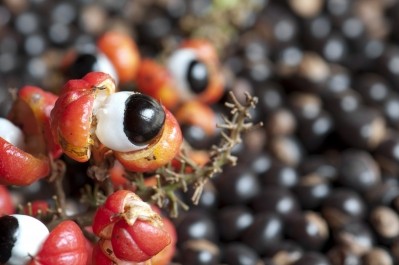Literature review maintains beeswax can also 'effectively protect skin barrier,' 'manage psoriasis,' and 'treat dermatitis in burns'

A literature review published in the Journal of Cosmetic Dermatology reported beeswax effectively protects the skin barrier, manages psoriasis, and treats dermatitis and burns. In addition to its healing properties, beeswax is a helpful additive for cosmetics.
The review, funded by Burt’s Bees, includes five studies of beeswax for skin application.
"In skincare, its function ranges from its role as an occlusive, helping to create a semi-occlusive skin barrier that minimizes transepidermal water loss; as a humectant, locking in hydration, and an emollient to soften and soothe the skin," the authors write.
One of beeswax’s most beneficial components is propolis, an antioxidant, antimicrobial and anti-inflammatory. Beeswax has been shown to treat Staphylococcus aureus, E. coli, and other strains of bacteria.
Extracts of beeswax containing methanol or ethanol also had antimicrobial actions, extending its application method.
Cosmetic application
Healthy skin has a low transepidermal water loss (TEWL) and high stratum corner water content (SCWC). Studies have shown that beeswax can decrease the TEWL and increase SCWC, resulting in healthier skin.
A beeswax-based moisturizer also improved erythema, fissures, scaling, and a statistically significant reduction in TEWL.
When added to cosmetic products, beeswax acts as a thickening agent. If combined with certain compounds, such as borax, beeswax emulsifies.
For aesthetic purposes, beeswax can help increase the luster and hardness, improving the color and sensory feel of products.
Skin health and conditions
Beeswax can minimize symptoms and signs of skin conditions such as dermatitis and psoriasis. One study found a mixture of honey, olive oil, and beeswax, combined with a corticosteroid, improved the symptoms of atypical dermatitis and psoriasis.
Researchers have also found that a honey, olive oil, and beeswax mixture is a helpful diaper rash treatment for infants. In addition, “its effects on the microbiome have been shown to reduce overgrowth of the skin’s natural microbes, preventing the development of various tinea-associated conditions.”
Beeswax, combined with other ingredients such as honey and olive or sesame oil, can also help heal burns. One study found that a mixture of beeswax, olive oil, and butter resulted in epidermis and dermis regeneration and skin renewal.
Another found the combination of A. tinctoria, beeswax, and olive oil helped to decrease hospitalization duration for second-degree burn victims. In addition to healing burns, beeswax can relieve post-burn symptoms such as itching.
“Much of the scientific literature described here has shown that beeswax can be a more natural approach to helping maintain skin hydration, easing inflammatory symptoms associated with skin diseases like atopic dermatitis or contact irritant dermatitis, and alleviating side effects of burns,” the authors write.
“Outside of its medicinal uses, beeswax remains a mainstay in cosmetics to help shape various products, add soothing properties, and enhance brilliance,” concluded the review's authors.
Source: Journal of Cosmetic Dermatology
2023;00:1–8; https://doi.org/10.1111/jocd.15718
Title: “A review of the use of beeswax in skincare”
Authors: Nong, Y., et al.




























